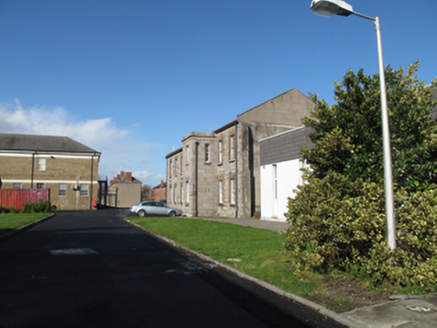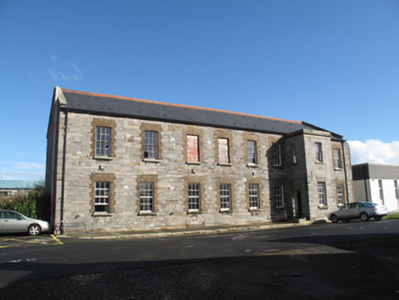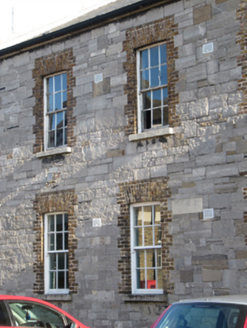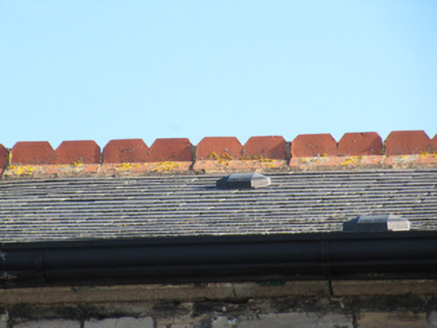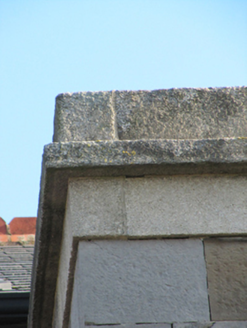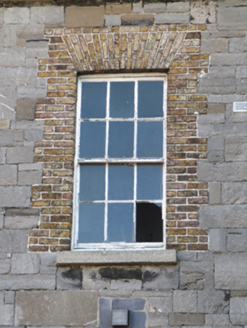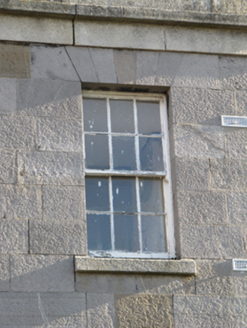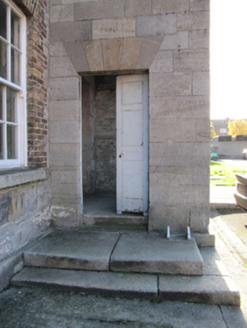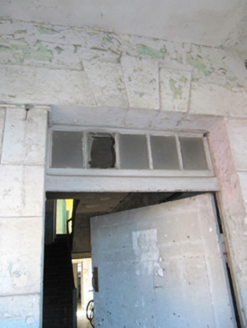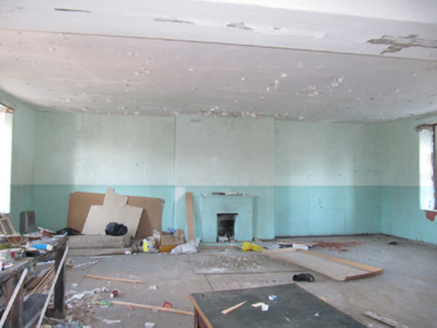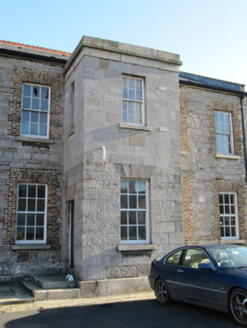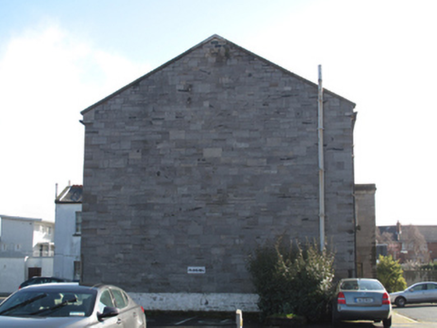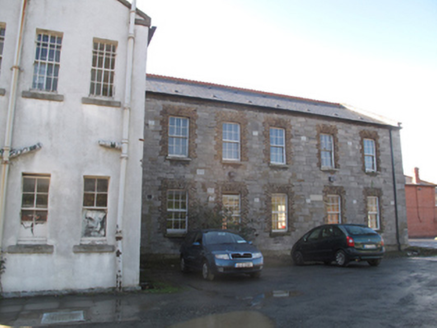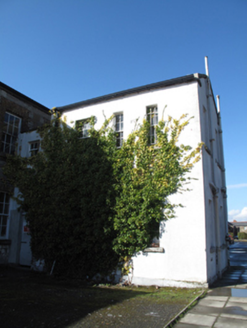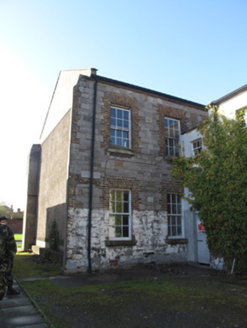Survey Data
Reg No
50081090
Rating
Regional
Categories of Special Interest
Architectural, Social
Previous Name
Portobello Barracks
Original Use
Hospital/infirmary
Date
1800 - 1820
Coordinates
315394, 232031
Date Recorded
19/11/2013
Date Updated
--/--/--
Description
Detached nine-bay two-storey former military hospital, built c.1810, having full-height projecting entrance bay to front (west) elevation and gabled full-height return to rear (east) elevation. Pitched slate roof having decorative terracotta ridge cresting, raised render coping, cast-iron rainwater goods, and calp limestone eaves course. Snecked calp limestone walls. Cut calp limestone to porch to front, having cut calp limestone plinth course and cut granite parapet and cornice. Rendered walls to extension to rear. Square-headed window openings, having yellow brick surrounds, granite sills and six-over-six pane timber sash windows. Square-headed door openings to north elevation of porch, with cut calp limestone voussoirs, double-leaf timber panelled door and granite steps with cast-iron bootscrape. Square-headed door opening to interior of porch, having painted masonry surround, timber panelled door and overlight. Timber staircase to hallway to interior.
Appraisal
Portobello Barracks was constructed at the beginning of the nineteenth century as a cavalry barracks. It was taken over by Irish troops in 1922, and became the Headquarters of the National Army, under the leadership of Michael Collins. In 1952 it was renamed after Cathal Brugha, Chief of Staff of the Irish Republican Army during the War of Independence, and Minister for Defence in the first Dáil. Although no longer in use, this former hospital is a reminder of the health service provisions in the barracks. The cut calp limestone of the later porch is well-executed and provides a pleasing contrast to the snecked calp of the walls.
